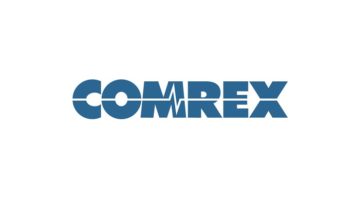
Dr. Deepen Sinha
One year ago, Radio World asked several experts to discuss trends in the broadcast codec technology arena (Jan. 2, 2013). It was a popular topic, so we return to it now to learn more and find out what’s new in a set of four Q&As. Replies were via email and have been edited for length.
Here, Dr. Deepen Sinha, CEO of ATC Labs. Watch the website for the rest in the series.
What’s the most important change in codec technology that radio organizations should know about?
Sinha:Obviously IP codecs have now come of age and are finding broad acceptance, both for remote broadcasting and STL applications. Moreover, now it possible to not just do a two-way session with a reporter in the field but also create a high-fidelity conference involving multiple reporters scattered all around the globe using a flexible mixture of hardware and software IP codecs.
Availability of quality soft codecs means you can deliver one to a reporter half-way around the globe in seconds and have him or her be set up to do a remote within minutes!
What is the “state of the art” in algorithms?
Sinha:I think there are two to three parallel evolutions.
First is in the field of conventional transform codecs, which have relatively high latency (> 30–50 ms); and these can provide broadcast-quality stereo audio in the 32–48 kbps range. Second is in the field of low-delay codecs with algorithmic latency of 23 ms or so, which can provide excellent audio at 80–128 kbps. And finally a third evolution is in the field of ultra-low-delay codecs, which have algorithmic latency of 2 ms or lower and provide high-fidelity audio at 128–192 kbps/channel.
You have a unique background in audio compression including personal involvement in AT&T Bell Labs, Lucent, the PAC codec and iBiquity Digital. How good are low-bitrate codecs, and how much better can we expect performance to get?
Sinha: Obviously low-bitrate codecs are now good enough for a lot of applications, but I strongly feel that there is more to come, primarily given that memory such as flash memory has improved dramatically in terms of access time and is rapidly coming down in cost.
This opens up several interesting possibilities for codec researchers, who even til recently have had to make major algorithmic tradeoff to keep the memory budget — particularly for a consumer end device. Back in Bell Labs in the 1990s, I had caught some flak from colleagues for stating that 8000 bps is a large number and 2 power 8000 represents an incredibly large number of possible audio waveforms that can be represented using these many bits in a second. What it really meant was that if we had access to a very large memory, that could be used to build dictionary-based coding, opening up hitherto unthought -of possibilities.
Is there a danger that our audio content is relying too much on compression?
Sinha: Yes, codec developers and vendors should probably not oversell compression. With the evolution in subjective testing methodologies, it is possible to make fairly low-bitrate codecs look good through suitable choice of testing methodologies. We often get a question, “Why should I stream at 64 kbps or even 32 kbps when codec X in such-and-such test was shown to be CD-quality at 24 kbps or 20 kbps?” Our recommendation typically is that you also have to take into account subtle artifacts — which become not so subtle over extended listening — long-term listenability, listener fatigue and tandem coding issues.
For a variety of reasons it is still very much better to use a lesser amount of compression if practical for a specific situation.
What is your company’s newest product or notable feature?
Sinha:We are introducing a powerful server-based studio IP codec called ALCO Enterprise Server, which can simultaneously support 12 active call-groups on a 1U server. This works with a network of our IP soft codec product ALCO Professional and recently introduced hardware IP codec ALCO Blue.
What relevance does the new AES67 standard have for you and your users?
Sinha: Emerging standards in enterprise-level IP studio audio infrastructure are obviously of great interest to us and our users. Let’s give it some time and see how things evolve; but one should definitely keep it on the radar screen.
Many people have expressed concerns about the radio industry’s health and outlook. What’s your take?
Sinha: I do not think I am qualified to comment on the latest economic scenarios in the radio industry. But just from a technology perspective, I think the industry now has access to exciting tools and products that can allow broadcasters to really expand their wings in terms of being able to constantly bring fresh new content from virtually anywhere in the world and also be able to reach targeted new audience and niche listenership, once again virtually anywhere in the world.
Comment on this or any story. Post below.











